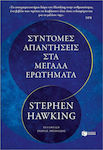from Protoporia
Skroutz Buyers Protection
Set the delivery location to see products according to your choice.
 AustriaEnglish
AustriaEnglish BelgiumEnglish
BelgiumEnglish BulgariaБългарски
BulgariaБългарски CroatiaEnglish
CroatiaEnglish CyprusΕλληνικά
CyprusΕλληνικά CzechiaEnglish
CzechiaEnglish EstoniaEnglish
EstoniaEnglish FinlandEnglish
FinlandEnglish FranceEnglish
FranceEnglish GermanyDeutsch
GermanyDeutsch GreeceΕλληνικά
GreeceΕλληνικά HungaryEnglish
HungaryEnglish IrelandEnglish
IrelandEnglish ItalyEnglish
ItalyEnglish LatviaEnglish
LatviaEnglish LithuaniaEnglish
LithuaniaEnglish LuxembourgEnglish
LuxembourgEnglish MaltaEnglish
MaltaEnglish NetherlandsEnglish
NetherlandsEnglish PolandEnglish
PolandEnglish PortugalEnglish
PortugalEnglish RomaniaRomână
RomaniaRomână SlovakiaEnglish
SlovakiaEnglish SloveniaEnglish
SloveniaEnglish SpainEnglish
SpainEnglish SwedenEnglish
SwedenEnglish
© 20[0-9]{2} Skroutz SA All Rights and Lefts reserved. FAQ | Terms of use | Privacy Policy | Cookie Policy

from Protoporia
Skroutz Buyers Protection



Scientific Books



Scientific Books



Scientific Books


Scientific Books

Prices are calculated for:Luxembourg, Other Payment Options
The initial approaches to the issues of the city and architecture that emerged from the development of the women's movement in the 1960s and 1970s set as a framework for exploring the relationship between women-space, women-city, women-home, with the aim of reexamining the approaches and theories of space from a feminist perspective. The installation of this alternative "vision" in spatial issues explored the effects of social inequality between the two genders, both in theories and in the practices of urban planning and architecture.
The central working hypothesis was that the construction of space has been based until now on the secondary role of women, in ways that have constituted one of the elements that constructed this inequality, not just reflecting it but reproducing it.
Where does this reflection stand today? Has the male-centered character of architecture and urban planning been overturned? Today, do we only talk about the emergence of the female perspective in spatial issues, or do we also talk about the gender of architecture? What does this theoretical shift mean and imply?
This shift became possible when the gendered nature of ideas and scientific theories, as well as the specific ways in which scientific discourse and the cognitive objects of all scientific fields, including architecture, have been structured, were understood.
The question, therefore, concerns how gender-based social inequalities have influenced both architectural thought and architectural discourse. Does architecture have a gender? And if so, how does this affect its symbolic and evaluative systems, the ways in which it constructs its central concepts and design tools? How has the social construction of gender identities, which attribute different meanings, contents, and values to the concepts of male and female, influenced architectural thought and practice?
The delineation of the approaches that have been developed so far in the above questions is a necessary framework of reference, which allows for the recording of the trajectory that the concept of gender has traced in its encounter with architecture and the theories of urban space. Moreover, it is a necessary condition for the comparative assessment of this trajectory in Greece.
Specifications are collected from official manufacturer websites. Please verify the specifications before proceeding with your final purchase. If you notice any problem you can report it here.